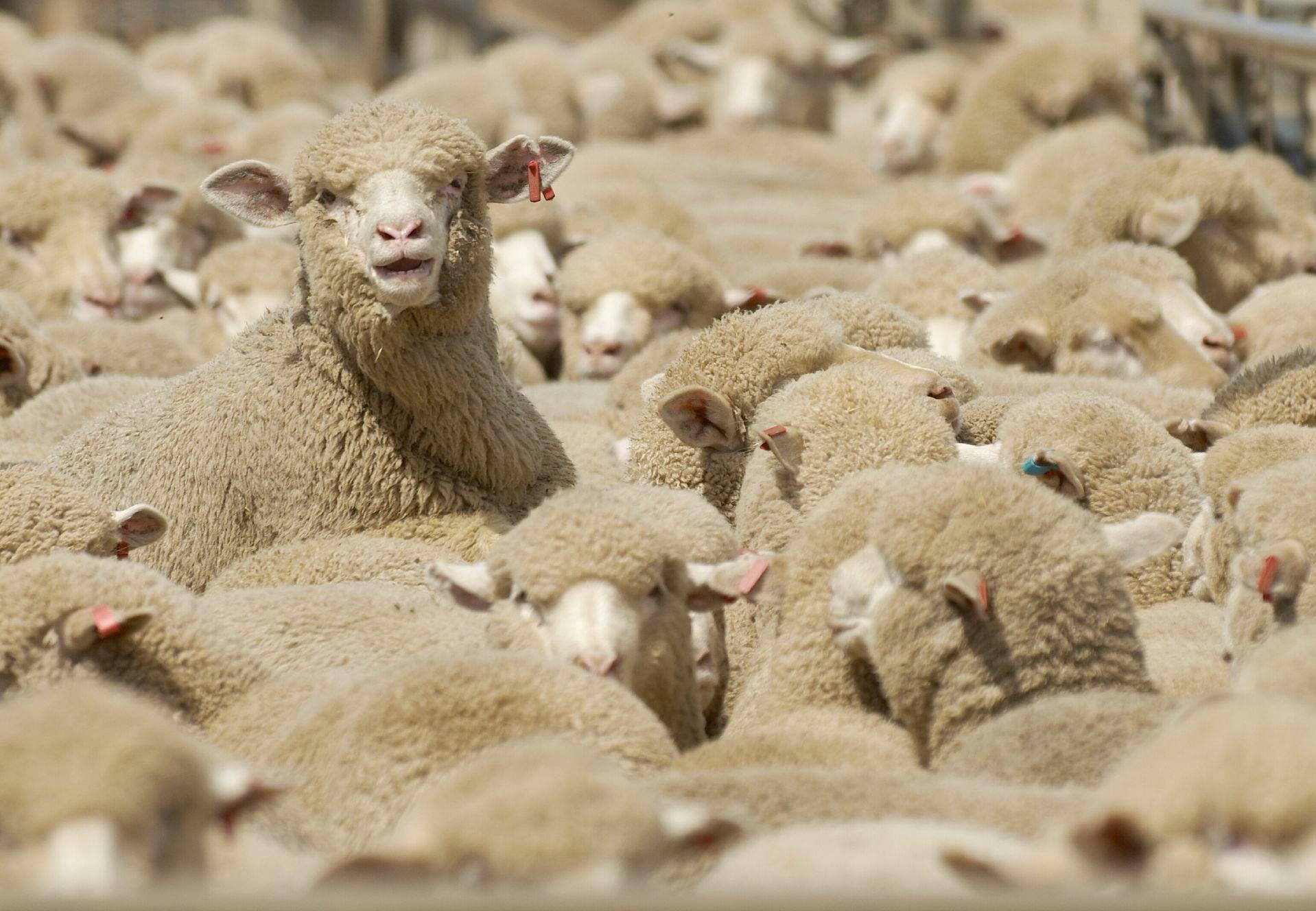
Sheep WOOL
Painful mutilations – the bloody business of sheep wool production
Sheep are kept for the production of wool, meat and dairy, with Merino breed of sheep as one of the mainly used breeds for wool1 – an indispensable product in the fashion world. The wool of white sheep is preferred, as it can be dyed any colour – hence the origin of the idiom 'black sheep', whose wool is less valued by industry.
The wool business is thriving worldwide. The leading producers are Australia, South America, and New Zealand, with Australia being home to over 78 million sheep2. Approximately 1,2 billion sheep live worldwide (FAO, 2020)3 and about half of those are directly used for wool production4,5. As with most widely used animal-based products, wool production and sheep farming come with major animal welfare issues.
Live Lamb Cutting (Mulesing): a cruel mutilation
Live lamb cutting is a procedure, where lambs, just 6-12 weeks old, are restrained on their backs, while strips of skin are cut away from their backside. Live lamb cutting causes excruciating pain, fear, and stress, and it's legal to carry out this procedure without any form of pain relief.6,7 This painful procedure is practised in Australia to avoid Myiasis (Flystrike). Flystrike is the infestation of a live sheep's body by flies, that lay their eggs in the skin folds of the hind parts of the sheep. Flies are especially drawn to that part of sheep because it is soaked with moisture and faeces. The highly wrinkled Merino sheep that are bred in Australia are especially prone to flystrike because their wrinkles capture moisture for a longer duration than plain bodied sheep. Live lamb cutting does not adequately protect sheep against flystrike, as flies can attack other parts of a sheep's body ('bodystrike').8 FOUR PAWS opposes mulesing live lamb cutting and calls on brands and industry stakeholders to phase out the practice.
FOUR PAWS advocates responsible wool sourcing
The solutions are available. More than 1,000 wool growers in Australia have successfully transitioned to flystrike resistant plain or smooth-bodied Merino sheep, proving that live lamb cutting (mulesing) is no longer necessary. Major suppliers can provide certified and reliably traced live lamb cutting-free wool. FOUR PAWS asks the wool industry and especially brands to take responsibility for the welfare of the sheep in their wool supply chains. Brands must set and communicate their timelines for a phase-out of live lamb cut wool. A clear signal from brands will encourage their supply chains to transition away from live lamb cutting. Read about our different case studies that show positive change is possible here.
WHAT YOU CAN DO
- If you plan to purchase wool products, please check the brand’s webpage or contact them to ask what steps they are taking to exclude wool from mulesed sheep and to make sure their wool products are mulesing-free.
- Sign our petition calling on brands to phase out mulesed wool: here.
- The most animal-friendly decision you can take is not to purchase or use any wool at all. Check out all those great alternatives out there!
Thank you!
Appeal towards the brands
- For information on moving away from Live Lamb Cutting, please refer to the FOUR PAWS Guidebook on “Transitioning Away from Live Lamb Cut Sheep Wool”, a resource combining science, brand insights, case studies from farmers that transitioned, as well as information on assurance schemes linked to live lamb cutting-free wool.
- Check your wool supply chain and find out if your wool is live lamb cutting-free or not.
- If your wool is live lamb cutting-free, let everybody know about it! Your consumers are keen to see that you’re caring about the welfare of the sheep in your supply chain.
- Should you find out that you’re sourcing wool from live lamb cut sheep, start setting up a phase-out plan and communicate it in your policies and to your supply chain. Your demand for non-live lamb cut wool will trigger a big change for more animal welfare in sheep wool production!
- Feel free to get in touch with FOUR PAWS if you need any support.
Thank you!
Source
2. Sheep projections | Meat & Livestock Australia. MLA Corporate. [accessed 2023 Dec 19]. https://www.mla.com.au/prices-markets/Trends-analysis/sheep-projections
3. FAO. Crops and livestock products. [accessed 2022 Sep 19]. https://www.fao.org/faostat/en/#data/QCL
4. Merino: King of Sheep | Maryland Small Ruminant Page. mdsmallruminant. [accessed 2023 Mar 3]. https://www.sheepandgoat.com/merinosheep
5. IWTO. STATISTICS. International Wool Textile Organisation. [accessed 2023 Mar 3]. https://iwto.org/resources/statistics/
6. Fisher AD. Addressing pain caused by mulesing in sheep. Applied Animal Behaviour Science. 2011;135(3):232–240.
7. Johnston CH, Richardson VL, Whittaker AL. How Well Does Australian Animal Welfare Policy Reflect Scientific Evidence: A Case Study Approach Based on Lamb Marking. Animals. 2023;13(8):1358. doi:10.3390/ani13081358
8. Phillips CJC. A review of mulesing and other methods to control flystrike (cutaneous myiasis) in sheep. Animal Welfare. 2009;18(2):113–121.
